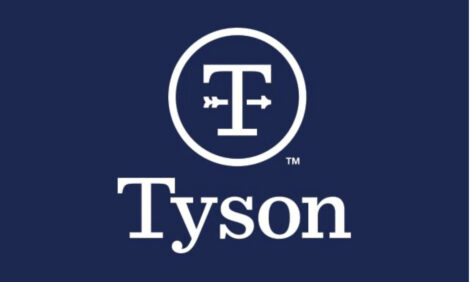



Market Preview: New Paradigms Taking Shape
US - Weekly U.S. Market Preview w/e 11th May, provided by Steve R. Meyer, Ph.D., Paragon Economics, Inc.U.S. market hog prices continued their quite normal seasonal increase last week with national net negotiated prices reaching $72.65/cwt. carcass (see Figure 1). The national net "total" price, which includes all contracted and packer-sold hogs but excludes packer-owned hogs, was $72.30/cwt. carcass.

That means producers selling on the negotiated market are now, on average, getting more for their hogs than their neighbors with contracts. This always happens at the upper reaches of a hog cycle or during the normal summer seasonal rallies. It is simply a reflection of tighter hog supplies relative to packer needs and packers' aggressive pursuit of non-contracted supplies.
Producers should not be surprised if this price escalation slows over the next few weeks. As you can see in Figure 1, hog price frequently falls slightly during the week of Memorial Day. Holiday demand slackens and the day off removes some push for hogs. Negotiated hogs usually peak in late June or early July at a price about $9/cwt. carcass higher than the price during the first week of May. It doesn't take a math degree to see that such a "normal" rally this year will carry hogs well above $80 -- to near $83, in fact. That would be the highest net hog price seen since December 2004.
Chicago Mercantile Exchange (CME) Lean Hogs futures for July touched on $80 back in early March, but have struggled recently to stay above the $74 mark. History says that these summer contracts will not move much from here through expiration, so I'm not sure that any action is warranted at this time.
I hope many readers have already priced a good portion of summer hogs on that March rally and have found other productive uses for their time, having locked in hogs at very good prices. This freeing of mental and emotional resources may be one of the big benefits of pre-pricing hogs.
Prices Holding Strong
Just how good have these prices been? Figure 2 shows weekly data for the nearby hog futures contract on the Chicago Mercantile Exchange. Note that both the current Lean Hogs contract and the old Live Hogs contract (prior to 1997) are shown here and that the old prices have not been converted to a carcass weight basis. That peak in June 1990 is the record-high price of roughly $89/cwt., when converted to carcass weight using a 73.5% yield that was probably representative of the time period. Prices in 1985-86 would be in the $85/cwt. carcass range, as well.

Today's prices are very, very good relative to history. U.S. producers have not responded aggressively to these prices and Canadian producers have not been able to respond at all due to the vast difference between the value of the Canadian dollar versus years past. So, the future looks bright so long as demand holds up.
The flip side, of course, is that we are going to need every penny to pay higher costs and keep some semblance of profitability. The cost picture got better this past week as substantial progress was made on corn plantings and new-crop Chicago Board of Trade corn futures fell to their lowest levels since January. Ditto for soybean meal. These declines (which have been offset somewhat in early trading on Friday morning) leave our estimates of corn-soy feed costs $12-14/ton lower than they were in late March (see Figure 3). Feed is certainly no bargain, but that reduction has saved producers $4-5/head on feed costs.

This is strictly a weather market at this point. Watch corn and beans for some technical moves as both are very close to some key support lines. Any penetration of those lines could signal further price breaks.
I've given several talks this spring where I unveiled what I believe to be the best strategy for dealing with these feed costs. Here it is:
- Buy low
- Convert efficiently
- Sell high
Pretty simple advice, but it usually draws a good laugh from the audience!
The moral to the story is this -- some principles never change, but the definitions do! The critical words in this strategy are "low," "efficiently" and "high."
As Figure 2 shows, the definition of a high hog price will likely change in coming months and years. Higher costs will be passed along and I believe we will see record-high hog prices during the next few years.
The definition of "low corn price" has already changed -- perhaps permanently. We all once saw $3 corn as high. Three-dollar corn is now "cheap" and will remain so for the next 3-4 years, for sure. Beyond that, increased acreage and higher yields may make $3 corn "normal," but it probably still will not be cheap relative to the long-run distribution of prices.
Redefining Top Performance
Finally, the changes in definitions may well mean that "efficiency" changes, too. We've been satisfied with 3:1 feed conversion ratios, but we may need to push those to 2.6:1 in the future. Similarly, a productivity level of 23 pigs/sow/year has been considered as at least "good,"-- but it may be the "survival rate" in the future.
The challenge for professional pork producers will be to grasp the new definitions and build them into your paradigms. You will have to view this business in some fundamentally different ways and making those kinds of changes is not easy. Get started now in questioning how you and your colleagues think about this business. The organization that can change the fastest will have a decided advantage in the future.









